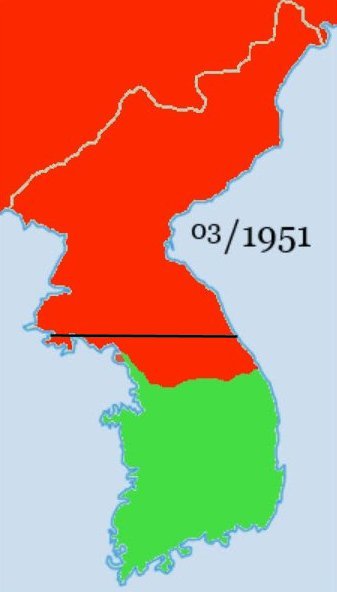
|
Korean War Time Line June 1950 to July 1953
11. Position of Forces in March 1951
In the last two weeks of February 1951, Operation Roundup was followed by
Operation Killer, carried out by the revitalized Eighth Army. It was a
full-scale, battlefront-length attack staged for maximum exploitation of
firepower to kill as many KPA and PVA troops as possible. Operation Killer
concluded with I Corps re-occupying the territory south of the Han River, and
IX Corps capturing Hoengseong. On 7 March 1951, the Eighth Army attacked with
Operation Ripper, expelling the PVA and the KPA from Seoul on 14 March 1951.
This was the city's fourth conquest in a years' time, leaving it a ruin; the
1.5 million pre-war population was down to 200,000, and people were suffering
from severe food shortages.
On 1 March 1951 Mao sent a cable to Stalin, in which he emphasized the
difficulties faced by Chinese forces and the urgent need for air cover,
especially over supply lines. Apparently impressed by the Chinese war effort,
Stalin finally agreed to supply two air force divisions, three anti-aircraft
divisions, and six thousand trucks. PVA troops in Korea continued to suffer
severe logistical problems throughout the war. In late April Peng Dehuai sent
his deputy, Hong Xuezhi, to brief Zhou Enlai in Beijing. What Chinese soldiers
feared, Hong said, was not the enemy, but that they had nothing to eat, no
bullets to shoot, and no trucks to transport them to the rear when they were
wounded. Zhou attempted to respond to the PVA's logistical concerns by
increasing Chinese production and improving methods of supply, but these
efforts were never completely sufficient. At the same time, large-scale air
defense training programs were carried out, and the Chinese Air Force began to
participate in the war from September 1951 onward.
⇦ Back to February 1951
On to April 1951 ⇨
Back to Korean War Time Line June 1950 to July 1953 - Page 2
|
